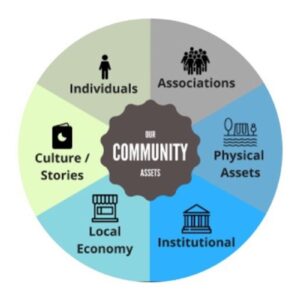
Every strong movement faces backlash. The abolitionists felt it. So did the suffragists. Veterans of the Civil Rights era will tell you: Censorship, fear-mongering, and legal intimidation are old tactics. But today, the stakes are rising fast.
The work of racial justice and DEI is under attack…but it is not illegal.
This spring, Senate Republicans passed a budget slashing Medicaid and the Supplemental Nutrition Assistance Program (SNAP), funding militarized immigration, eliminating support for public media, and fueling historic wealth transfers to the ultrarich. Meanwhile, the Supreme Court has issued rulings that target trans youth, undermine public education, and strip states of the power to challenge federal overreach. The shift toward authoritarianism continues at an alarming rate.
Despite the backlash and the overt invocation of White supremacy by political leaders, many of us are not retreating. We’re deepening our commitment to racial justice, diversity, equity, and inclusion. This work has saved lives, opened doors, improved health outcomes, built vibrant workplaces, and helped our children imagine a more loving world.
Yet fear is powerful. Under pressure, some organizations are pulling back, pausing, or going silent. But there is a core aspect we need to remember: The work of racial justice and DEI is under attack in an evolving legal landscape, but it is not illegal.
Federal laws that provide equal opportunity and protect civil rights remain, and ignoring them remains illegal. Federal courts have struck down Trump’s broad anti-DEI executive orders. We know that federal agencies, workers, and organizations receiving federal funds may feel pressured to shift their language (and some have). However, semantics aside, they can still implement programs that foster equal opportunity and access.
Based on our experience as leaders in organizations and foundations that have chosen to hold the line on racial justice and equity, we offer a framework for action—one we shared on an NPQ webinar with over 175 people from Boston to Buenos Aires. The message was clear: We are not giving up or in, and we are not alone.
The Risk and Power Spectrum: Four Responses
Leaders and institutions are experimenting with different responses to the backlash of racial justice and DEI, but the threats are not evenly felt.
Courage is contagious. Seeing others wield it helps us build our own.
Justice-rooted organizations, especially those led by BIPOC, immigrant, LGBTQ+, and other historically marginalized communities, face the greatest risk. With limited resources and thinner margins of safety, some are already experiencing burnout, targeting, and even dissolution.
That is why we must understand not just how groups are responding, but where they fall on a spectrum of both risk and power. We outline four typical responses on that spectrum that organizations are currently taking in reaction to the backlash:

- In forced and/or preemptive compliance, federal agencies, some nonprofits, foundations, and companies have scrubbed equity language or demographics from their communications and programs out of fear of retribution or direct attacks on their work and budgets. We know small nonprofits that changed their grant application language to eliminate all references to equity and replaced it with language about opportunity and access.
- Some institutions have chosen silence out of concern for being targeted if they are vocal, and others for strategic reasons. For example, we have heard of organizations that avoided press calls to ensure they don’t get dragged into contributing to false narratives about diversity, equity, and inclusion.
- Others are offering pragmatic support, customizing and designing their responses depending on whether they are working with the government, the private sector, or the social sector, and based on whether these entities are known for supporting racial justice and equity initiatives, or may be hostile to them. For example, consultants and racial justice practitioners in the social sector are trying to meet their clients “where they are” while continuing to push for the work of racial equity and justice.
- We are heartened and excited to see more leaders and organizations taking a stance of organized power. They’re continuing equity work, keeping their language intact, and fighting back in court when attacked. Courageous nonprofits like Democracy Forward, the Lawyers Committee for Civil Rights, and the National Council of Nonprofits are leading the way, organizing and litigating to defend and advance equity and justice. People are also showing up in the streets through protests like “Hands Off” and “No Kings.” When the National Park Service erased Harriet Tubman from its website, civil rights groups called them out and won. Courage is contagious. Seeing others wield it helps us build our own.
In our webinar poll this past summer, 46 percent of participants identified with the pragmatic response, 25 percent with silence, 23 percent with organized power, and 6 percent with compliance. Our hope is that more of us are now choosing organized power—acting in solidarity and taking transformational risks that prioritize long-term collective wellbeing. This may be the only way to resist authoritarianism, the erosion of civil society, and the abandonment of marginalized communities.
Of course, the goal isn’t to shame, but to shift. When we see what’s possible, we move from self-preservation to justice-aligned action.
Organizations and philanthropic institutions with more resources, whether that’s political cover, legal teams, financial flexibility, or media reach, have a responsibility to shoulder more risk. If your organization has a deep bench and strong funder relationships, your obligation may be greater. When better-resourced organizations take strategic risks, they create cover for smaller, frontline groups. That is solidarity in practice and a strategy for collective endurance.
Use this spectrum to assess where your organization is, what risks you can take, and how to support others navigating higher threats.
We will all be worse off and concede too much if we think we can “wait out the storm.”
Resist and Persist in Organized Power
We can choose to take an organized power stance, knowing others can and will be with us. Here is how:
- Don’t go it alone. If you plan to go public with your racial justice, diversity, equity, and inclusion work, ask other organizations and leaders to join you. Should you come under attack, you’ll want to have people ready to defend you in solidarity, whether it’s standouts in support, organized protests, or press conferences to show support. Stand up as peers in solidarity. There’s still strength in numbers.
- Build the organizational infrastructure to fight back. Gather a team that includes people with legal, public relations/media, governance, digital safety, and narrative-building expertise to examine your exposure and help you withstand attacks while you advance your equity work. This is not simply risk mitigation. It is about having a team that enables you to meet the risks with power.
- Think of new ways to fund. To protect equity work under threat, funders are getting creative by offering verbal agreements in place of written contracts, providing general operating grants to allow for flexibility and reduce exposure, and giving directly to individuals. At the same time, they can strengthen the front lines by funding legal defense, narrative strategy, public education, and cross-movement organizing led by directly impacted communities. Funders can also offer protective resources like security assessments or media support, and must resist the instinct to ask grantees to scrub language, hide their values, or water down their missions.
- Don’t close your doors too fast. Organizations losing significant funding might consider program consolidations and partnerships, mergers, and ways to work in networks, so you don’t lose the impact of your work. If you have to close down, consider how to hand off important programs and projects and explore ways to reemerge in a different form in the future when conditions shift.
- Stay grounded and focused. As leaders, we will continue to experience periods of significant stress, fear, and anxiety over the following years. We need to build a community around us to stay in the work of justice and cultivate our most courageous actions. Let’s keep developing healthy workplaces and communities, asking our families and neighbors for help, and gathering a list of excellent practitioners (doctors, therapists, healers, coaches, body workers, and so on.) to keep us healthy, well, and grounded.
Choose Power, Not Fear
Do you want to lead with strategy and courage, or scarcity and fear? We will all be worse off and concede too much if we think we can “wait out the storm.” Rather, we can organize within and across institutions to build power. We can work together, in small and big ways, to create courageous actions that can be replicated throughout our communities and our country. We don’t need to surrender to hate and authoritarianism when our power and love are so much stronger. What will you choose? How will you respond?














